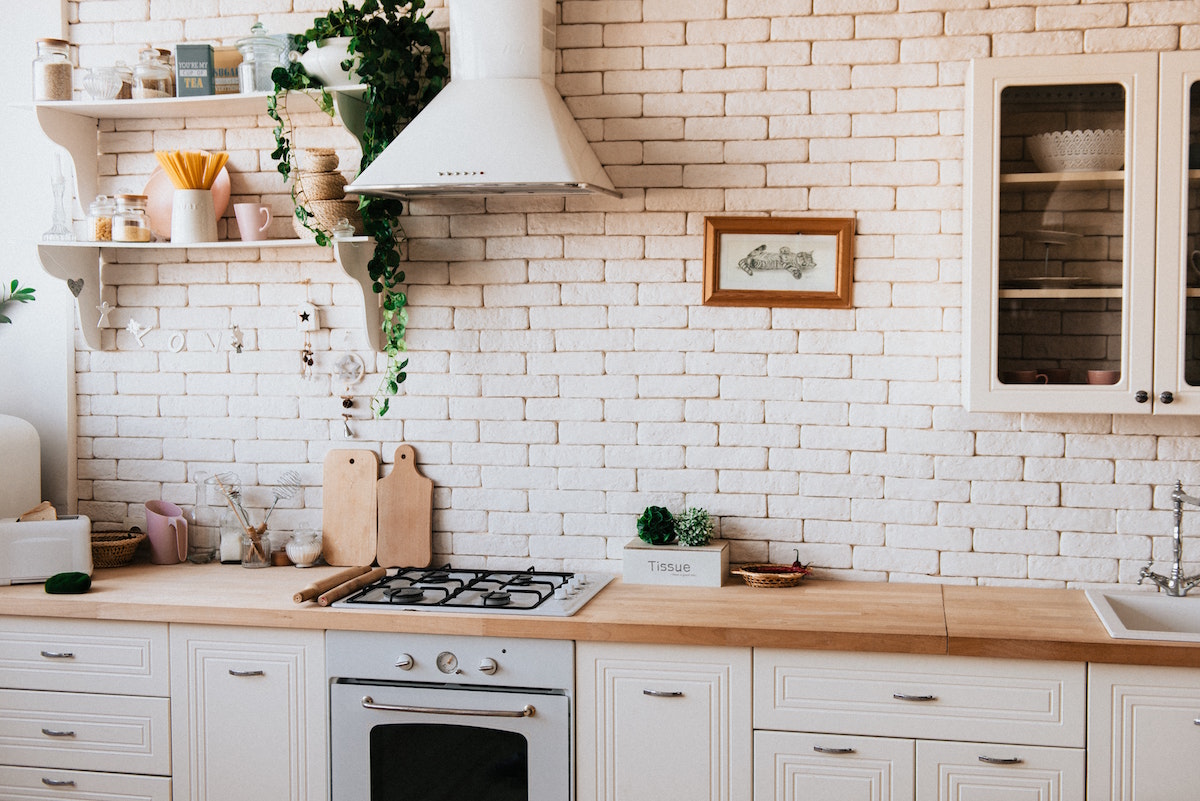This post may contain affiliate links, which provide a small commission to us when you purchase, at no additional cost to you. Thank you for helping to support our efforts in providing you the best, most up-to-date information for GloWell.
Want to be more sustainable at home? Start in the kitchen!
The kitchen is the heart of your home. Unfortunately, it can also be a hub for excess plastic and food waste. If you’re trying to live that eco-friendly, waste-less lifestyle, a kitchen overhaul is a must.
Here are 10 simple swaps you can make to make your kitchen more sustainable.
1. Ditch the Plastic Wrap
Plastic wrap is often used thoughtlessly and thrown away frequently. This thin plastic film can end up in waterways, ensnaring aquatic friends and creating beachside pollution that takes many years to break down.
Instead of plastic wrap, try beeswax wrap instead. This natural wax-coated cloth sticks to itself so it fits over most bowls, dishes, or cut foods. It wipes clean so it can be reused again and again.
2. Banish Baggies
Just like plastic wrap, plastic zip-top bags are generally single-use items that end up in landfills, on beaches, and in waterways. Often times, municipal recyclers won’t accept and recycle these types of plastic.
Swap plastic bags for reusable food storage bags, instead. Reusable bags can be washed in the sink or washing machine, so you can use them over and over again for sandwiches, snacks, and food storage.
3. Pack a Lunch
If you’ve got a habit of grabbing lunch to-go, you’re probably filling your trash can with single-use plastic and Styrofoam to-go containers. Styrofoam is made from petroleum, which is definitely a non-sustainable material.
Try using a bento-style box or reusable containers to pack up leftovers and skip the restaurant or fast-food to-go containers. Reusable steel bento boxes are perfect for creating an enticing and fun DIY-style lunch kit for your little ones.
4. Re-think Your Bottle
Globally, more than one million plastic water bottles are bought every single minute—and 91% of these bottles are thrown away and never recycled. Bottled water may be marketed as a healthy alternative to tap, but bottled water is no safer than tap water, according to foodandwaterwatch.org.
Recycle your last single-use plastic water bottle and invest in a glass, steel, or aluminum reusable water bottle. Just give your bottle a quick wash each day and fill it up with water from the tap or your home water filter. You’ll save money and cut down on plastic waste.
Bonus: This app tells you where you can refill your water bottle for free or for a minimum fee.
5. Avoid Plastic Produce Bags
Sure, you’re bringing your own reusable totes to the farmers market, grocery store, and more. But if you are filling your reusable totes with plastic produce bags full of veggies, there’s room for improvement.
Bring your own reusable produce bags to the farmers market or grocery store. Avoiding these single-use plastic produce bags will reduce the amount of plastic waste you create. It will also help your farmer (or store) cut down on their costs. Reusable produce bags can be any linen, woven mesh, or any breathable bag you put your produce in.
If you’re feeling crafty, you can find instructions to make your own DIY reusable produce bags online. Make some for your own kitchen and then gift some to your sustainable friends!
6. Buy in Bulk
When you buy pre-portioned snack packs you pay for the packaging—and you get a lot of wrappers and waste. Buying in bulk doesn’t mean giving up the convenience of grab-and-go snacks. If you invest a little bit of time in prepping at the beginning of the week, you can still have small-sized snacks without the waste.
Try buying foods in bulk and packaging them yourself into smaller reusable containers or bags. For example, instead of lunch packs of baby carrots, buy a bulk pack of large carrots and chop them up. Keep them in your fridge in a reusable glass storage container and then wrap them in beeswax wrap or a reusable snack bag before packing them for lunch.
7. Save Your Scraps
Food waste is a significant environmental problem. Food waste uses a quarter of our water supply and, when tossed in landfills, becomes a significant source of methane as it rots.
Use every part of the food you cook. Just like your grandparents did, this no-waste attitude will add flavor to food, save money, and cut down on your household trash.
The easiest way to use food scraps that would normally be headed for the garbage is to use them for soup. Bones, carrot tops, celery scraps, mushroom stems, and even corn cobs can all be boiled together to make a flavorful broth. Bag up your scraps in a reusable bag and store them in the freezer until you’re ready to make a big batch of beautiful, healthy, homemade broth.
8. Wash It, Don’t Toss It
Not all trash receptacles need a plastic liner. If you have smaller wastebaskets that mainly hold papers, tissues, or miscellaneous trash, don’t use a plastic bag to line the can. Just wash the can when it gets dirty.
Wash, don’t toss can also apply to any plastic bags you still have in your kitchen. If you do have a few plastic zip-top bags still in use, get the most out of them by washing, drying, and reusing them. You may be surprised: one single zip-top bag may last you months and months of reuse.
9. Compost Food Scraps
Have you jumped on the compost trend yet? Plant-based food scraps can be composted and turned into a rich soil amendment for gardens. Check with your municipality to see if they have compost collection or drop-off sites. Fruit and vegetable peels, cores, spoils, and scraps can be composted. Eggshells and coffee grounds can be composted, too.
Animal products like meat, bones, or vegetables cooked in meat should not be composted.
If you’re thinking about composting at home, check with a local Master Gardener for more pro tips.
10. Swap Paper Products for Cloth
Single-use paper towels, napkins, and cleaning wipes may be convenient, but they can add up to a lot of trash.
Try using washable dishcloths or rags for some kitchen chores like wiping a messy face or cleaning a stovetop. Pack cloth napkins in lunches. You don’t have to buy fancy, monogrammed napkins if that’s not your thing: cut up old sheets, towels, or t-shirts and make your own!
Tip: Reusing a dirty dishcloth can spread bacteria on surfaces such as countertops, tables, or even dishes. Be sure to wash your cloth napkins, towels, and dishcloths frequently in the washing machine to banish bacteria.
See Ya, Single-Use!
Giving your kitchen a sustainable overhaul may feel like a big project, but you can make small changes that add up to big results over time. If you don’t know where to start, take a look at your single-use items: those typically-plastic pieces that are designed to be used once and then tossed in the trash. Replace them with a reusable alternative one by one.
Whether you make or buy your reusable kitchen products, saying “see ya!” to single-use items is one of the easiest ways to make your kitchen more sustainable.















Join the GloWell Community on Social!
Don't risk missing a single thing. Follow us on social and become part of the GloWell community.